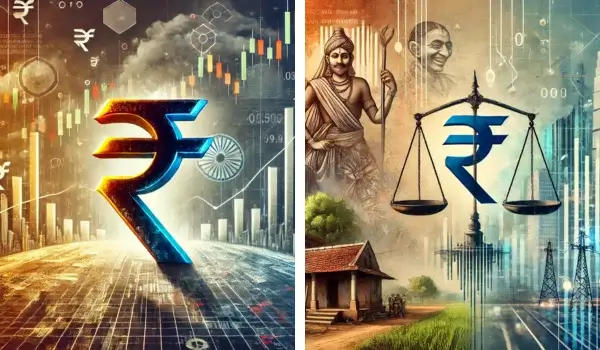As of January 2025, India’s economy stands at a critical juncture, grappling with a depreciating rupee, inflationary pressures, and the ambitious rollout of the Digital Rupee. These developments present both challenges and opportunities for the nation’s economic trajectory.
Depreciation of the Indian Rupee
The Indian rupee has experienced a notable depreciation against major currencies, particularly the US dollar. This decline is attributed to several factors, including a widening trade deficit, fluctuations in global oil prices, and capital outflows influenced by global economic uncertainties. The depreciation has led to increased import costs, contributing to domestic inflationary pressures.
Inflationary Trends
Rising inflation remains a concern for India’s economy. The increased cost of imports, especially crude oil, has a cascading effect on the prices of essential goods and services. The Reserve Bank of India (RBI) continues to monitor these trends closely, adjusting monetary policies to mitigate inflation without stifling economic growth.

Introduction of the Digital Rupee
In response to the evolving financial landscape, the RBI has introduced the Digital Rupee, a Central Bank Digital Currency (CBDC). This initiative aims to modernize the monetary system, reduce reliance on physical cash, and enhance the efficiency of transactions. The Digital Rupee is expected to lower transaction costs, improve cross-border payment systems, and provide a secure alternative to private cryptocurrencies.
Economic Implications of the Digital Rupee
The adoption of the Digital Rupee is poised to have significant economic implications:
- Cost Reduction: Transitioning to a digital currency can substantially reduce the costs associated with printing, distributing, and managing physical currency.
- Financial Inclusion: The Digital Rupee has the potential to bring unbanked populations into the formal financial system, promoting inclusive economic growth.
- Enhanced Security: Utilizing blockchain technology, the Digital Rupee offers a secure and transparent medium for transactions, reducing risks associated with counterfeiting and fraud.
Market Acceptance and Challenges
The success of the Digital Rupee depends on its acceptance among consumers and businesses. Initial adoption rates indicate a growing interest, with major retail chains and online platforms beginning to accept digital currency payments. However, challenges remain, including the need for robust digital infrastructure, cybersecurity measures, and public awareness campaigns to build trust and understanding of the new system.
Conclusion
India’s economy is navigating a complex landscape marked by currency depreciation and inflationary pressures. Amidst these challenges, the introduction of the Digital Rupee represents a forward-thinking approach to modernizing the financial system. By embracing digital transformation, India aims to enhance economic resilience, promote financial inclusion, and position itself at the forefront of the global digital economy.

Hello, I’m Kapil Kumar, a seasoned SEO expert and blogger at WinnersList.in. My mission is to spotlight exceptional individuals and organizations across various domains. Through curated lists, profiles, and inspiring stories, I aim to celebrate outstanding achievements and inspire the next generation of champions. Join me in this journey.
